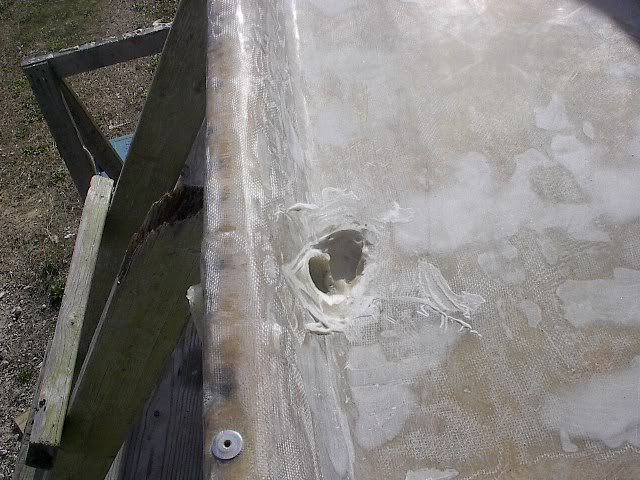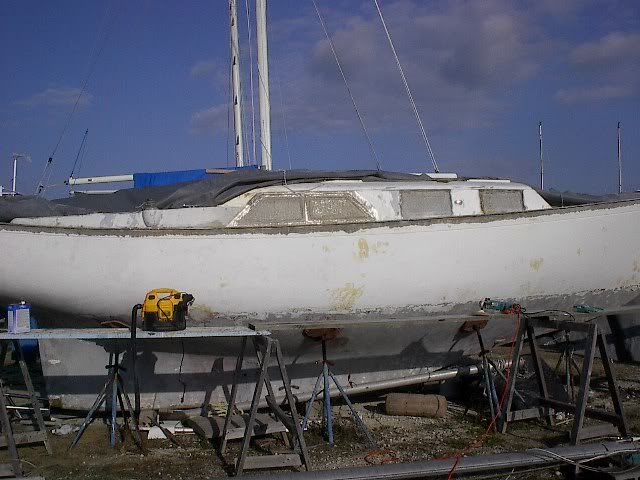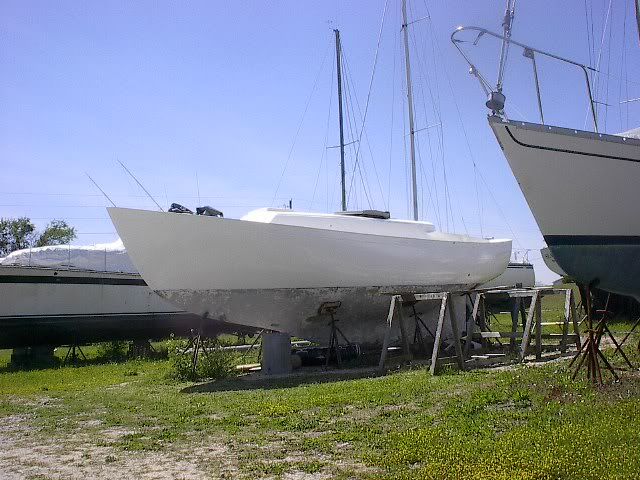After doing some more reading and everyone's great input on this post, I am now nearly 100% certain I'd like to do this type of repair. The basic idea is to give a heavy layup on both the interior and exterior of the joint and do away with the machine screws (as Tim suggested). The biggest question I have is how to, if at all, re-attach the toe-rail. But, before that (and other) questions, here's the idea I have for this repair (see if you think it will stand up to offshore sailing):
1) Remove all machine screws for hull to deck joint. These will not be installed again.
2) Clean all caulking possible from joint.
3) Remove gelcoat starting at the joint, 7" down freeboard and 7" on deck (to prepare for fiberglass layup).
3) Fair interior / exterior of joint to prepare for fiberglass.
4) Lay-up
exterior joint with 3 layers of biaxial fiberglass. Lay-up schedule as follows:
a) 2" x 24" strip (spanning joint, deck and hull only)
b) 4" x 26" strip (spanning joint, deck, hull as well as 1" of fiberglass "down" onto freeboard)
c) 8" x 28" strip (spanning joint, deck, hull and 4" down onto freeboard)
5) Lay-up
interior joint with 3 layers of biaxial fiberglass. Lay-up schedule as follows:
a) 4" x 24" strip
b) 8" x 26" strip
c) 10" x 28" strip
6) Sand & carefully fair the exterior fiberglass. Here I will try to blend the freeboard "overlap" into the shape of the hull by using the extra 3" of ground down freeboard to continue this line hopefully hiding the repair entirely. I'll also use the extra 3" on the deck to make the new fiberglass
7) Sand & fair the interior fiberglass. This just needs to be done nice enough to be smooth and look semi ok, as it will be hidden inside lockers.
8) Prime and paint
9) Install toe rail....(I'm not sure how to do this).
Here are the questions I have about the plan mentioned above:
1)
What is the best method to attach the toe rail?
I have to admit I'm at a loss how this might be done. I read all the links Rachel mentioned, and found that nothing stuck out as an "ah-hah!". I liked the upgraded toe rail the S/V Fenix website Rachel linked showed, but he didn't go into detail how he attached it. (
http://www.sbastro.com/FeNIX/Projects/P ... riorFS.htm). The "Good Old Boat" article was interesting, but I didn't think it would work for me exactly (
http://www.goodoldboat.com/reader_servi ... oerail.php).
2)
Do you believe the layup in steps 4 and 5 is strong enough?
Avoiding leaks is great, but making sure it's strong is the most important thing. I also wanted to note that I plan to vary lengths of my fiberglass strips to make as much overlap as possible, but will doing so make the fairing process that much harder, since there will be "speed bumps" in the layers of biaxial (1 layer stacked on another on another in some places)? What's the best way to not have speed bumps and have an even "level", while still getting good overlap of fiberglass?
3)
Does blending the repair into the existing shape of the freeboard and deck (step 6) even possible?
Will the 3" of extra gelcoat allow for enough fairing to blend the repair into the same lines that exist on the current freeboard and deck? Will water drain properly with the increased height of the biaxial and fairing? I'm thinking that using the extra 3" of removed gelcoat, to fair in the thickness of 3 layers of biax might not be enough width to get a complete blend between the existing layers of the hull/deck and the new repair, but perhaps...
Again, thanks for all the input. I hate to beat a dead horse here, but I just want to make sure I'm doing the right thing for this important repair.










